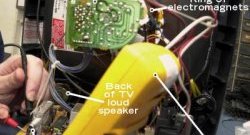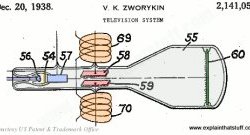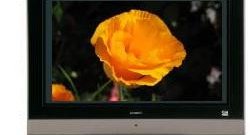Television how it Works
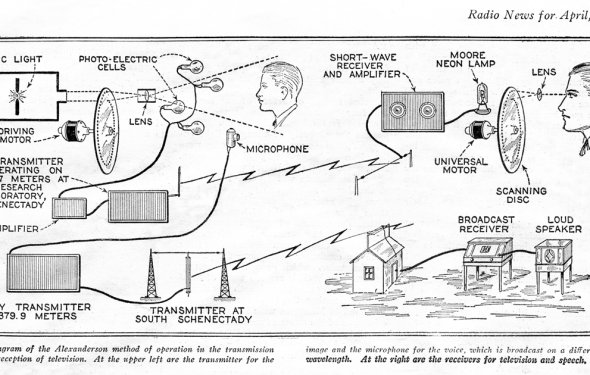
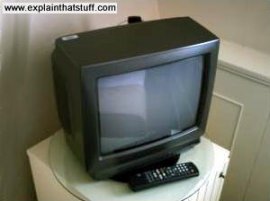 Advertisement
Advertisement
Television is an amazing window on the world. At the flick of a button, you can travel from the North Pole to the Serengeti, watch men walking on the Moon, see athletes breaking records, or listen to world leaders making historic speeches. Television has transformed entertainment and education; in the United States, it's been estimated that children spend more time watching TV (on average 1023 hours a year) than they do sitting in school (900 hours a year). Many people feel this is a bad thing. One of TV's inventors, Philo T Farnsworth (1906–1971), came to the conclusion that television was hopelessly dumbed down and refused to let his children watch it. Whether TV is good or bad, there's no doubting that it's an ingenious invention. But how exactly does it work? Let's take a closer look!
Photo: A typical old-fashioned cathode-ray-tube (CRT) television set. These are getting quite hard to find now!.
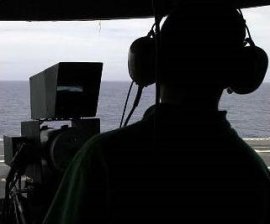 Radio—with pictures
Radio—with pictures
The basic idea of television is "radio with pictures". In other words, where radio transmits a sound signal (the information being broadcast) through the air, television sends a picture signal as well. You probably know that these signals are carried by radio waves, invisible patterns of electricity and magnetism that race through the air at the speed of light (300, 000 km or 186, 000 miles per second). Think of the radio waves carrying information like the waves on the sea carrying surfers: the waves themselves aren't the information: the information surfs on top of the waves.
Television is really a three-part invention: the TV camera that turns a picture and sound into a signal; the TV transmitter that sends the signal through the air; and the TV receiver (the TV set in your home) that captures the signal and turns it back into picture and sound. TV creates moving pictures by repeatedly capturing still pictures and presenting these frames to your eyes so quickly that they seem to be moving. Think of TV as an electronic flick-book. The images are flickering on the screen so fast that they fuse together in your brain to make a moving picture (really, though they're really lots of still pictures displayed one after another).
TV cameras
We can see things because they reflect light into our eyes. An ordinary "still" camera photographs things by capturing this light on light-sensitive film or using an electronic light-detector to make a snapshot of how something appeared at a particular moment. A TV camera works in a different way: it has to capture a new snapshot over 24 times per second to create the illusion of a moving picture.
Photo: A typical video/TV camera. The camera operator stands at the back watching a small TV screen that shows exactly what the camera is filming. Note that the cameraman isn't looking through the camera lens: he's seeing a recreation of what the lens is viewing on a screen (a bit like looking at the display on a digital camera). Photo by Justin R. Blake courtesy of US Navy.
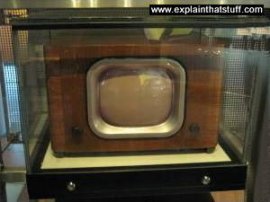 What's the best way for a TV camera to capture a picture? If you've ever tried copying a masterpiece from the wall of an art gallery into a notebook, you'll know there are lots of ways to do it. One way is to draw a grid of squares in your notebook, then copy the details systematically from each area of the original picture into the corresponding square of the grid. You could work from left to right and from top to bottom, copying each grid square in turn. A TV camera works exactly like this when it turns a picture into a signal for broadcasting, only it copies the picture it sees a line at a time. Light-detectors inside the camera scan across the picture line by line, just like your eyes scanning from top to bottom of the picture in an art gallery. This process turns the picture into 525 different "lines of colored light" that are beamed through the air to your home as a video signal. At the same time, microphones in the TV studio capture the sound that goes with the picture. This is transmitted alongside the picture information as a separate audio signal.
What's the best way for a TV camera to capture a picture? If you've ever tried copying a masterpiece from the wall of an art gallery into a notebook, you'll know there are lots of ways to do it. One way is to draw a grid of squares in your notebook, then copy the details systematically from each area of the original picture into the corresponding square of the grid. You could work from left to right and from top to bottom, copying each grid square in turn. A TV camera works exactly like this when it turns a picture into a signal for broadcasting, only it copies the picture it sees a line at a time. Light-detectors inside the camera scan across the picture line by line, just like your eyes scanning from top to bottom of the picture in an art gallery. This process turns the picture into 525 different "lines of colored light" that are beamed through the air to your home as a video signal. At the same time, microphones in the TV studio capture the sound that goes with the picture. This is transmitted alongside the picture information as a separate audio signal.
TV transmitters
The louder you shout, the easier it is to hear someone at a distance. Louder noises make bigger sound waves that have the power to travel further before they get soaked up by bushes, trees, and all the clutter around us. The same is true of radio waves. To make radio waves that are strong enough to carry radio and TV pictures many miles from a TV station to someone's home, you need a really powerful transmitter.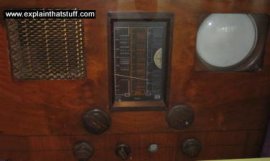 This is effectively a giant antenna (aerial), often positioned on top of a hill so it can send signals as far as possible.
This is effectively a giant antenna (aerial), often positioned on top of a hill so it can send signals as far as possible.
Not everyone receives TV signals transmitted through the air in this way. If you have cable television, your TV pictures are "piped" into your home down a fiber-optic cable laid beneath your street. If you have satellite television, the picture you see has been bounced into space and back to help it travel from one side of the country to the other.
With traditional television broadcasting, picture signals are sent in analog form: each signal travels as an undulating (up-and-down moving) wave. Many countries are now switching over to digital television, which works in a similar way to digital radio. Signals are transmitted in a numerically coded form. Many more programs can be sent this way and, generally speaking, picture quality is better because the signals are less susceptible to interference as they travel.
TV receivers
It doesn't really matter how the TV signal gets to your home: once it's arrived, your TV set treats it exactly the same way, whether it comes in from an antenna (aerial) on the roof, from a cable running underground, or from a satellite dish in the garden.
Remember how a TV camera turns the picture it's looking at into a series of lines that form the outgoing TV signal? A TV set must work the same process in reverse to turn the lines in the incoming signal back into a faithful image of the scene that the camera filmed. Different types of TV sets do this in different ways.
Photos: Early TV receivers. Left: A typical black and white TV from 1949. Note the tiny screen. Right: An HMV 904 combined TV and radio unit from about ten years earlier. The loudspeaker is on the left, the radio tuning dial is in the center, and the TV screen (again tiny) is on the right. Both use cathode-ray tube technology and are exhibits from Think Tank, the science museum in Birmingham, England.

